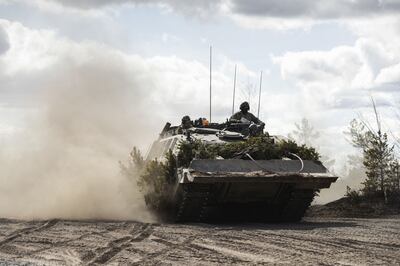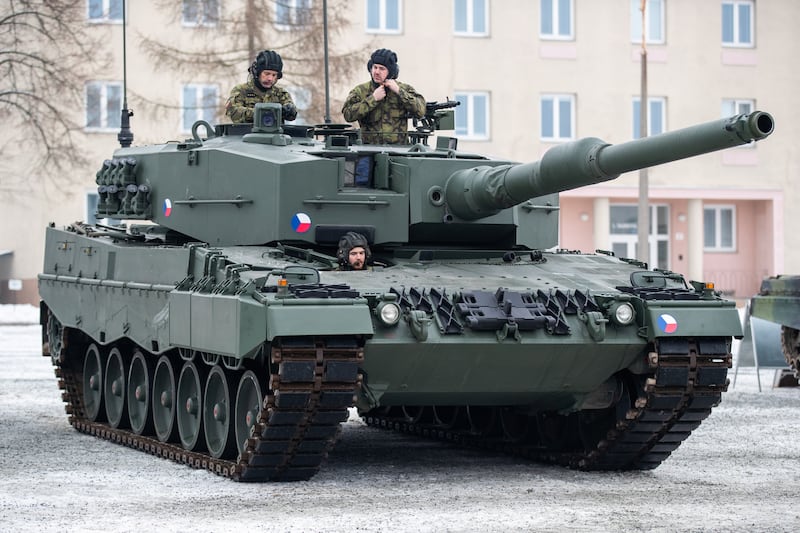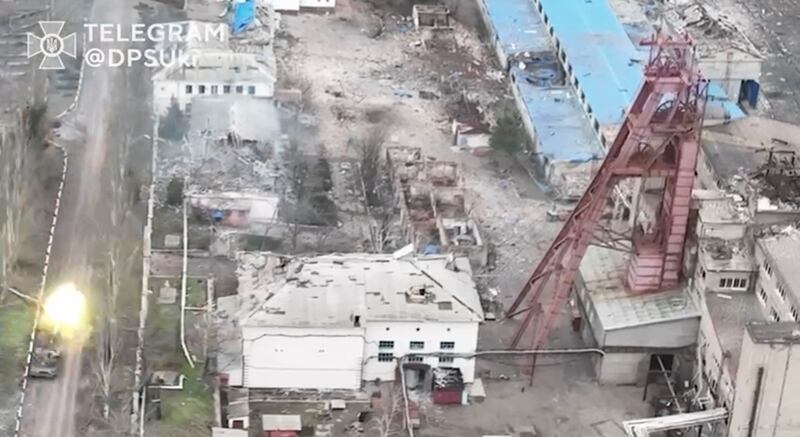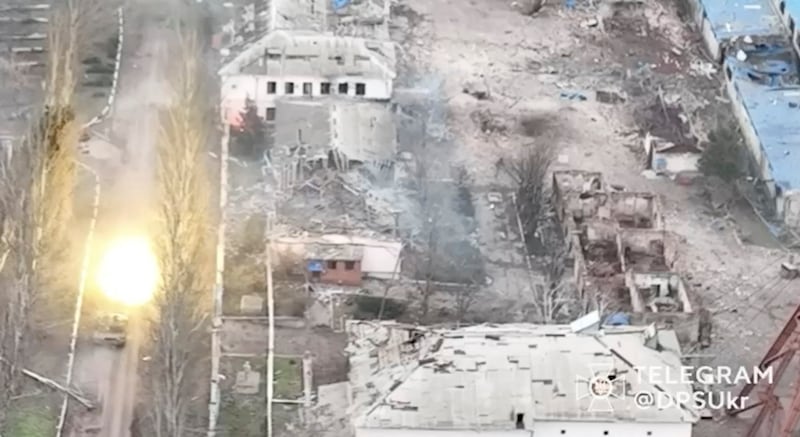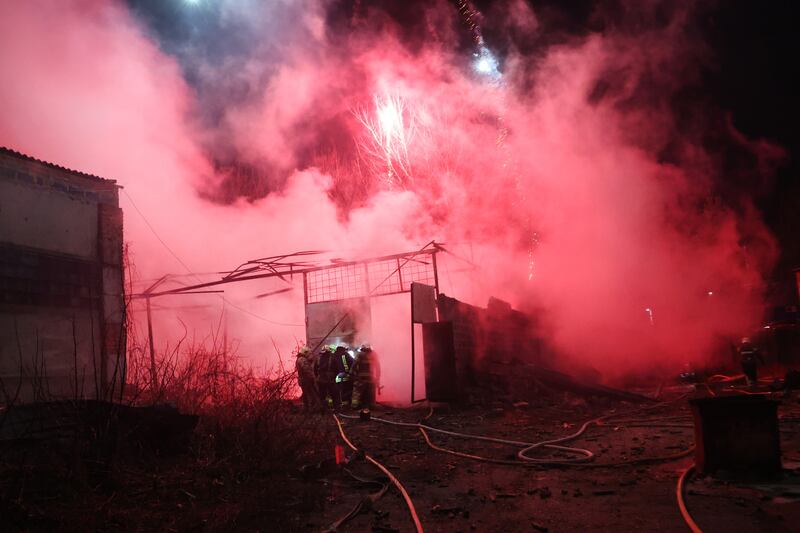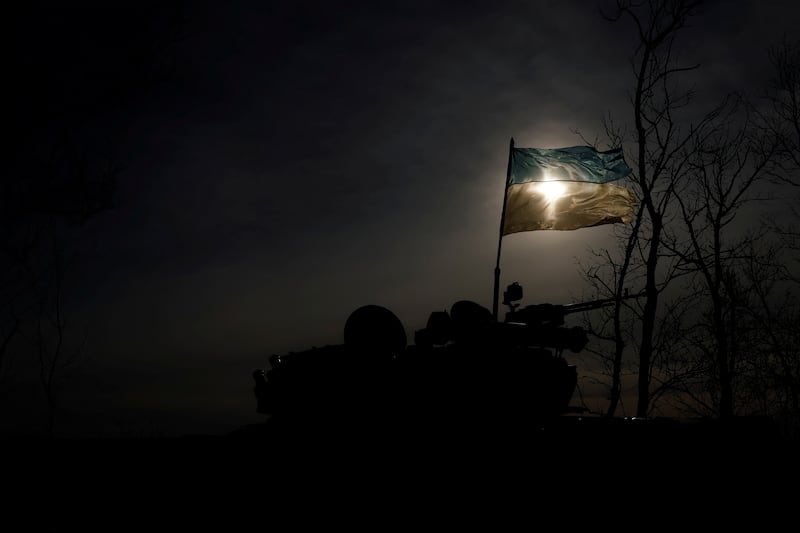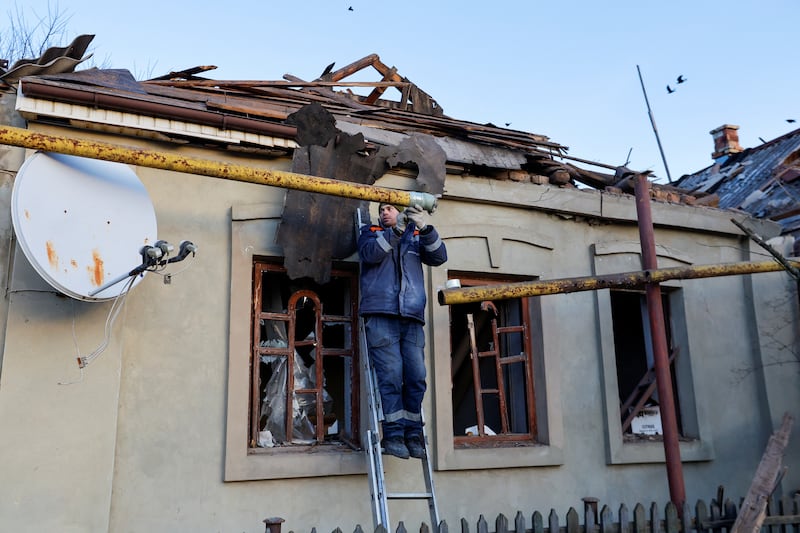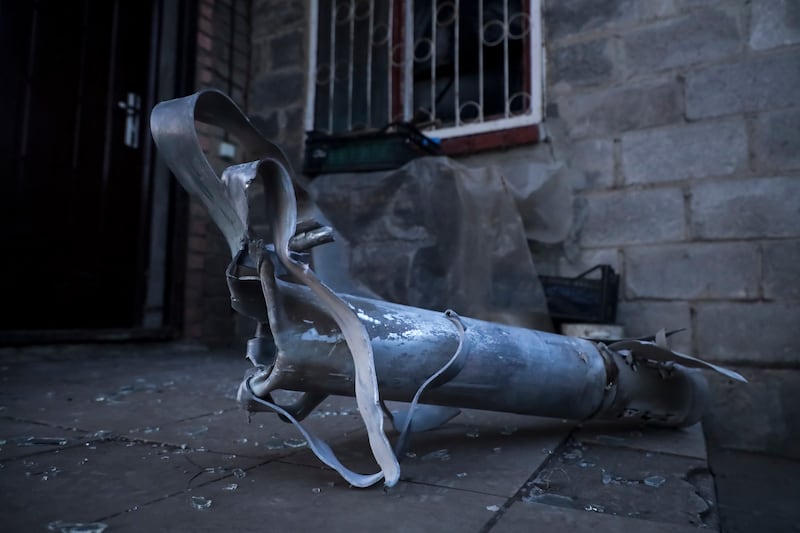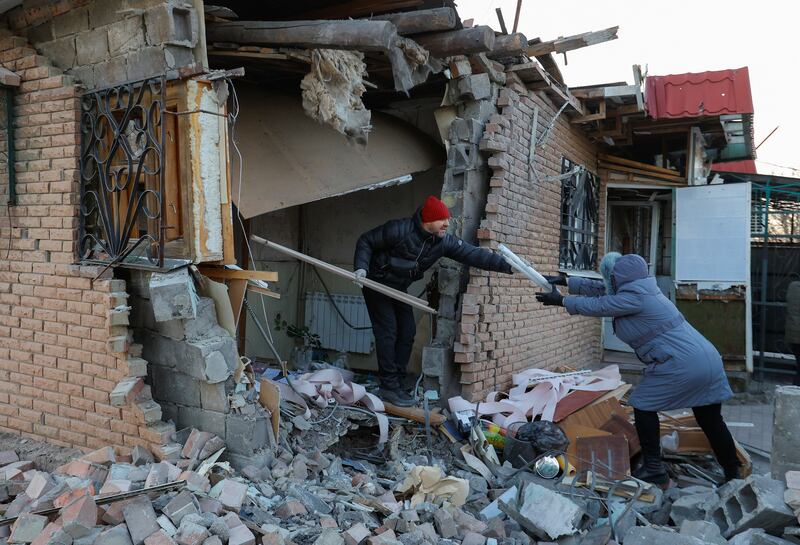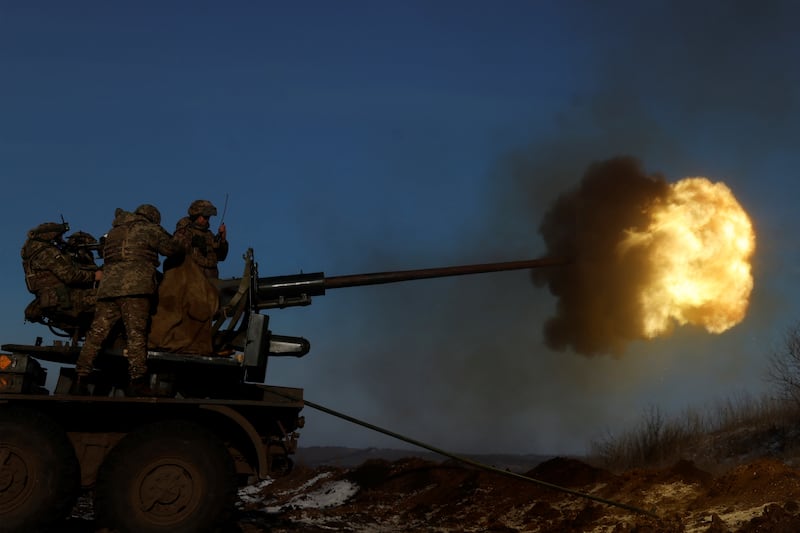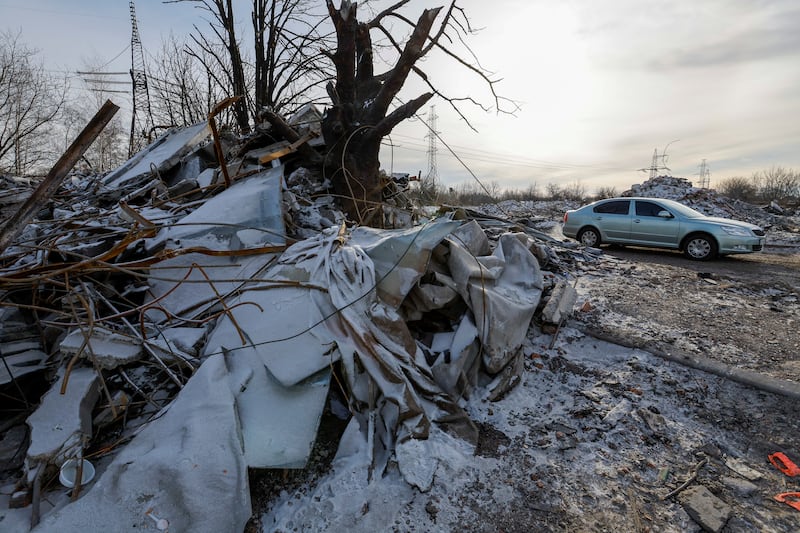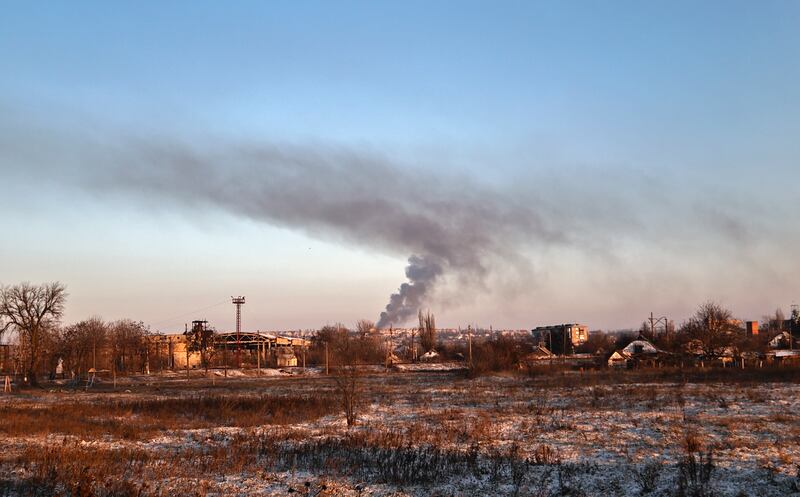Germany on Thursday kept Ukraine waiting for the heavy battle tanks it has needed for months, saying no decision has been made on whether to send them.
Defence Minister Christine Lambrecht said no formal requests had been received from allies such as Poland to forward their German-made Leopard tanks.
It came a day after Poland's president called for a coalition of allies to send their Leopards to Ukraine, increasing pressure on Berlin to grant the export licence.
Ms Lambrecht, who was inspecting a tank brigade involved in a Nato rapid-response force, said Germany would decide based on the evolving situation in Ukraine, taking its lead from allies such as the US.
"I think it's the right approach not to rule anything out, but always to weigh up what we want to achieve, what the challenges are and always to consider our co-ordination with international partners and allies," she said.
"There is no decision to send battle tanks. This decision has not been made."
An arms pipeline that began with helmets and defensive weapons has evolved over the past year into shipments of drones, helicopters, artillery guns, rocket ammunition and air defence systems.
France last week announced it would send light tanks to Ukraine, the first time a western power has offered such vehicles directly rather than arranging for former eastern bloc countries to send Soviet-era tanks.
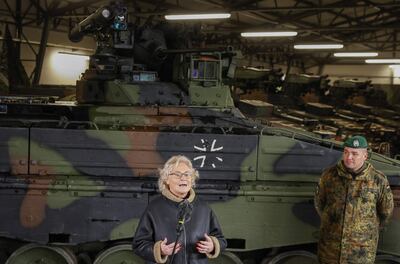
Germany and the US have since said they will also send light vehicles, including 40 German Marders on which Ukrainian forces will be trained by the end of March.
But the pressure is immense on German Chancellor Olaf Scholz to send the heavy Leopards that Ukraine has long demanded.
If Germany gives the go-ahead, Finland and potentially others could follow Poland in offering their own Leopards to Ukraine.
Mr Scholz and his aides said Germany will not act unilaterally or let Nato be a party to the war with Russia — while critics say at least one of those excuses no longer applies after allies started sending tanks.
“Leopard tanks will be delivered when there’s so much pressure that nothing else can be done. Then the Chancellor will quickly follow suit,” Norbert Roettgen, a prominent foreign affairs expert in the German opposition, said on Thursday.
“The way Germany has acted on military support to Ukraine is a tragedy, because our reluctance divides Europe, instead of bringing east and west together in a European momentum.”
Britain is considering sending Challenger 2 battle tanks to Ukraine, with officials saying heavy armour is needed to regain territory from Russia. A similar debate is playing out in the US over M1 Abrams tanks.
Ukraine conflict — in pictures
Weapons timeline
January-February 2022: Defensive arms
As Russian troops massed on Ukraine’s borders, Britain announced it was sending anti-tank weapons — but Defence Secretary Ben Wallace was at pains to stress that these were light, short-range, “clearly defensive”, “not strategic” and posed no threat to Russia.
The US announced extra “security assistance” for Ukraine while remaining tight-lipped about the details.
Germany was at this point still taking the pacifist line that it would not send weapons into a conflict zone. A donation of 5,000 helmets attracted more ridicule than praise.
That changed on February 27, three days after Russia's invasion, when Mr Scholz declared a “watershed moment” and authorised arms deliveries to Ukraine.
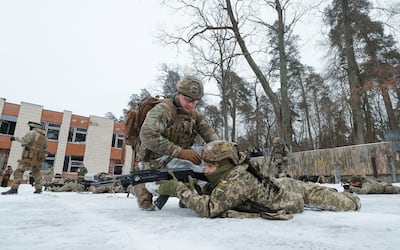
Spring 2022: Increasing support
Germany’s initial package of arms included Stinger portable rocket launchers, Strela anti-aircraft missiles and a shipment of anti-tank grenades.
After tying itself in semantic knots over the difference between light and heavy weapons and what constituted a tank, Berlin eventually agreed to send a mobile “air defence gun system” called a Gepard.
Abandoning secrecy, the Pentagon announced a vast donation of 2,000 Stingers, 800 portable missile launchers, 400 machine guns, 20 million pieces of small ammunition and more.
The UK sent 6,000 anti-tank weapons and 120 armoured fighting vehicles and spoke of a “false distinction” between defensive and offensive arms, while France sent modern lorry-mounted Caesar cannons.
But there were still red lines. Nato rejected Ukraine’s plea to establish a no-fly zone, and Mr Scholz said his “highest priority” was to prevent the conflict escalating into a nuclear war.
Summer 2022: Ring exchange
A popular stance in western capitals has been that Ukraine is better off using Soviet-era equipment, which its troops are familiar with, than more advanced Nato gear that requires months of training.
Britain’s former prime minister Boris Johnson said last year some western equipment “simply wouldn’t be appropriate” for Ukrainian forces.
Instead, western powers embraced what Germany called a “ring exchange”, replenishing the arsenals of former Warsaw Pact countries who sent weapons to Ukraine.
The Czech Republic got its hands on some of Germany’s Leopard tanks in exchange for sending T-72 tanks of Soviet design into Ukraine.
A variant of this was Berlin allowing other countries to export German-made weapons. These included tanks from the Czech Republic and howitzers from Estonia that once belonged to communist East Germany.
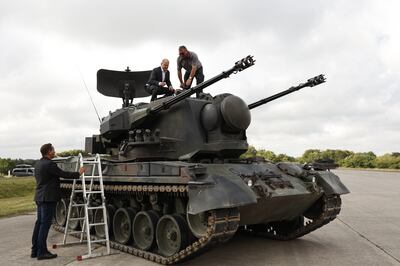
Autumn-winter 2022: Air defence
As Russia bombarded Ukrainian cities to cut off power, Ukrainian President Volodymyr Zelenskyy switched his focus to demanding air defences from his allies.
The US offered a Patriot missile battery, described by the Pentagon as its most advanced air defence system — another step away from light or Soviet-era equipment.
Germany sent IRIS-T guided missile systems and Britain’s Prime Minister Rishi Sunak offered 125 anti-aircraft guns to combat Iranian-made drones.
Still, there was a debate over how far Nato should allow Ukraine to go on the offensive rather than fending off Russian attacks.
The US did not deny modifying some of its Himars rocket systems to prevent Ukraine firing them deep into Russian territory.
January 2023: Tanks at last?
French President Emmanuel Macron announced on January 4 that his country would send “light combat tanks” of French design to Ukraine.
It was a western first, and weakened Mr Scholz’s case that German tank deliveries would be a unilateral gamble.
The following day, Germany offered Marder fighting vehicles and the US said it would send its own Bradley model.
But Ukraine made clear that it would not be satisfied until the German-made Leopards were granted.
“The longer it takes to make the decision, the more people will die”, Foreign Minister Dmytro Kuleba said when of German counterpart Annalena Baerbock visited Kharkiv.
